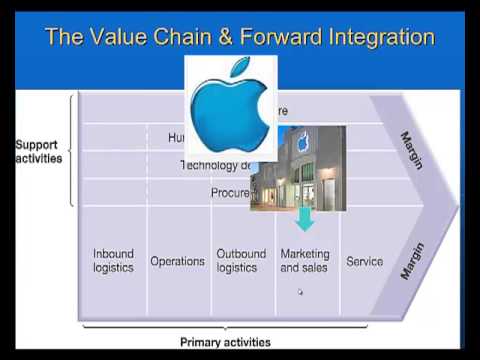The affiliate programme is not permitted in Spain for the commercialisation of investment services and client acquisitions by unauthorised third parties. The DAX 30 index experiences persistent long-term trends that last from a few months to a few years. Less active traders can ride the trend in both directions using CFDs. As with all trading activities and instruments, consider these pros and cons when trading DAX 30 CFDs.
- Prime Standard is a section of the Regulated market with a higher level of transparency.
- It operates across several segments, including pharmaceuticals, crop science and animal health.
- Thus, it comprises only a small sample of companies and doesn’t necessarily reflect the state of the German economy.
The specification can be viewed on the corresponding page of the official website eurex.com. Please note that you can choose between regular DAX contracts and mini or micro versions for small cap traders. What might happen from here is that the buyers will look to take out the February all-time high and eventually push the price above 14,000. In this regard, the bulls may look for a move to 14,500, where the 127.2% Fibonacci extension of the 2018 retracement is located. Get $25,000 of virtual funds and prove your skills in real market conditions.
What is DAX-100?
The selection of index components is based on the market capitalization of the publicly traded shares. Several of the member corporations are large and multinational and their performance is affected by Germany and the global economy. The index constituents now make up 80% of the market capitalisation of all publicly-traded German companies. International investors can gain exposure to The DAX using a number of exchange-traded funds (ETFs) that trade on European exchanges. Furthermore, all the sub-indices are based on free-float market capitalisation (at least 10% outstanding shares should be held by the public), and they have a 10% cap factor on individual constituents.
Activists clash with leading German chemical group over board vote – Financial Times
Activists clash with leading German chemical group over board vote.
Posted: Tue, 06 Jun 2023 04:41:15 GMT [source]
Serkan Batir, Qontigo’s Managing Director for Indices, says the overhaul helps ensure the benchmark is fit for purpose in an evolving financial landscape. Here is a list of the companies on the DAX 40 by market capitalisation as of October 2021. As we’ve already covered, the DAX is capitalisation-weighted.
Other Trading Basics
However, you can trade ETFs, futures contracts and contracts for difference (CFDs) on the index. While the DAX 30 is the most well-known stock index in Germany and includes the country’s largest companies, there are three other DAX indices to follow. Allianz SE is one of the largest financial services companies in Europe and the biggest one in Germany. It has several subsidiaries involved in insurance and asset management. It represents approximately 75% of the total value of publicly listed German companies.
Watch Kramer Capital Research on US Markets – Bloomberg
Watch Kramer Capital Research on US Markets.
Posted: Mon, 12 Jun 2023 01:29:00 GMT [source]
For long-term investors and traders, you need to monitor closely what the ECB is doing, and in times of monetary policy easing (such as nowadays), you might want to try buying any dips. It doesn’t look like we will see any other type of monetary policy soon, so that this strategy could be well used by investors now. As previously said, technical analysis is helpful as well, especially for short-term traders. You can find more about the technical analysis in our trading academy articles.
European stocks slip amid China growth concerns
It operates worldwide through several subsidiaries, supplying gas to various industries. The company is based in Ireland but retains a listing in Germany as it was formed when Linde AG and Praxair merged. DAX stands for Deutscher Aktienindex, which means the German stock index. Clicking “Confirm” below will take you to a different website, intended for jurisdictions outside the US.
You should consider whether you understand how this product works, and whether you can afford to take the high risk of losing your money. The main drive of the German stock index seems to be the European Central Bank and its monetary policy. First of all, Germany is one of the most significant exporters in the euro bloc, and German companies are happy when the euro declines against other currencies (most notably against the British Pound). As the ECB continues to print money and all the rates are kept at or below zero, the euro has very few reasons to strengthen.
What drives the DAX index?
MDAX is an index that tracks the performance of the 60 largest and most liquid stocks of companies that rank immediately below the DAX30 stocks. The companies are essentially classified as mid-caps and are drawn from various industries. Economic data – German economic data will affect the domestic stock market. Depending on the nature of the data, some companies will be more affected, while others will be less or not affected at all. For example, rising interest rates would have a larger impact on financial services companies than on others.
The country is the world’s third-largest exporter and third-largest importer. This means that the value of the Euro can have a significant impact on the DAX. A rising Euro would be bad news for exporters, while a major devaluation of the currency would make life more difficult for importers. Most DAX ETFs are similar and essentially just track the performance of the index. The index was created on 1st July 1988 and started trading at 1163 points.
Alternatively, you can trade the individual DAX companies themselves. The Frankfurt Stock Exchange has created two versions of the DAX, a performance index and a price index. However, the price index is the index that resembles commonly quoted indexes in other countries, such as the S&P 500 (USA 500) and the FTSE 100 (UK 100). In the DAX performance index, corporate distributions such as dividends, capital gains, and cash payments are calculated as part of the share price. In the DAX price index, these disbursements are not taken into account.
Likewise, if the DAX 40 price is falling, it means that companies on the index are experiencing a decline in price. On the other hand, if you’re looking to day trade the DAX then CFDs and spread betting could be a better option. Take a look at the history of the DAX 40, previously known as the DAX 30, since 2011, documenting some of the fundamental drivers that impacted the index’s price movements. Plus500CY is the issuer and seller of the financial products described or available on this website. The prices used to calculate the DAX are taken from electronic trading system Xetra, which is operated by Deutsche Borse. The DAX family of indices also includes the MDAX, SDAX, and TecDAX indexes.
IG International Limited is licensed to conduct investment business and digital asset business by the Bermuda Monetary Authority. You can trade the DAX index directly on its cash (spot) price using CFDs via our Germany 40 index. This is the most direct https://forexarticles.net/ way to access the performance of the DAX via CFDs with us. The TPO and Profile and the Delta Indicator have been added to the chart.The profile shows the maximum volume level (1) for the period when the market was balanced for several days.



